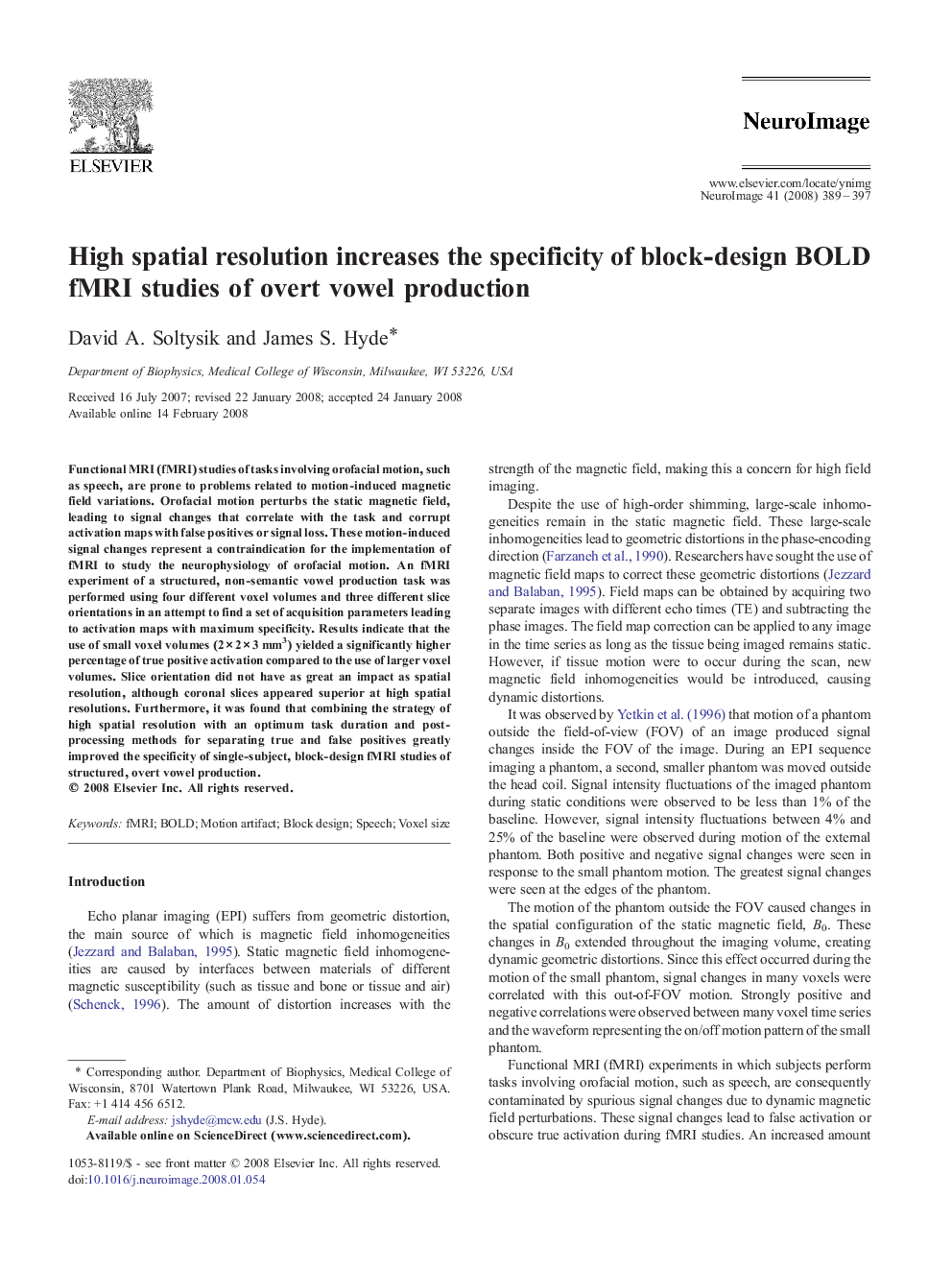| Article ID | Journal | Published Year | Pages | File Type |
|---|---|---|---|---|
| 6039064 | NeuroImage | 2008 | 9 Pages |
Abstract
Functional MRI (fMRI) studies of tasks involving orofacial motion, such as speech, are prone to problems related to motion-induced magnetic field variations. Orofacial motion perturbs the static magnetic field, leading to signal changes that correlate with the task and corrupt activation maps with false positives or signal loss. These motion-induced signal changes represent a contraindication for the implementation of fMRI to study the neurophysiology of orofacial motion. An fMRI experiment of a structured, non-semantic vowel production task was performed using four different voxel volumes and three different slice orientations in an attempt to find a set of acquisition parameters leading to activation maps with maximum specificity. Results indicate that the use of small voxel volumes (2Â ÃÂ 2Â ÃÂ 3Â mm3) yielded a significantly higher percentage of true positive activation compared to the use of larger voxel volumes. Slice orientation did not have as great an impact as spatial resolution, although coronal slices appeared superior at high spatial resolutions. Furthermore, it was found that combining the strategy of high spatial resolution with an optimum task duration and post-processing methods for separating true and false positives greatly improved the specificity of single-subject, block-design fMRI studies of structured, overt vowel production.
Related Topics
Life Sciences
Neuroscience
Cognitive Neuroscience
Authors
David A. Soltysik, James S. Hyde,
